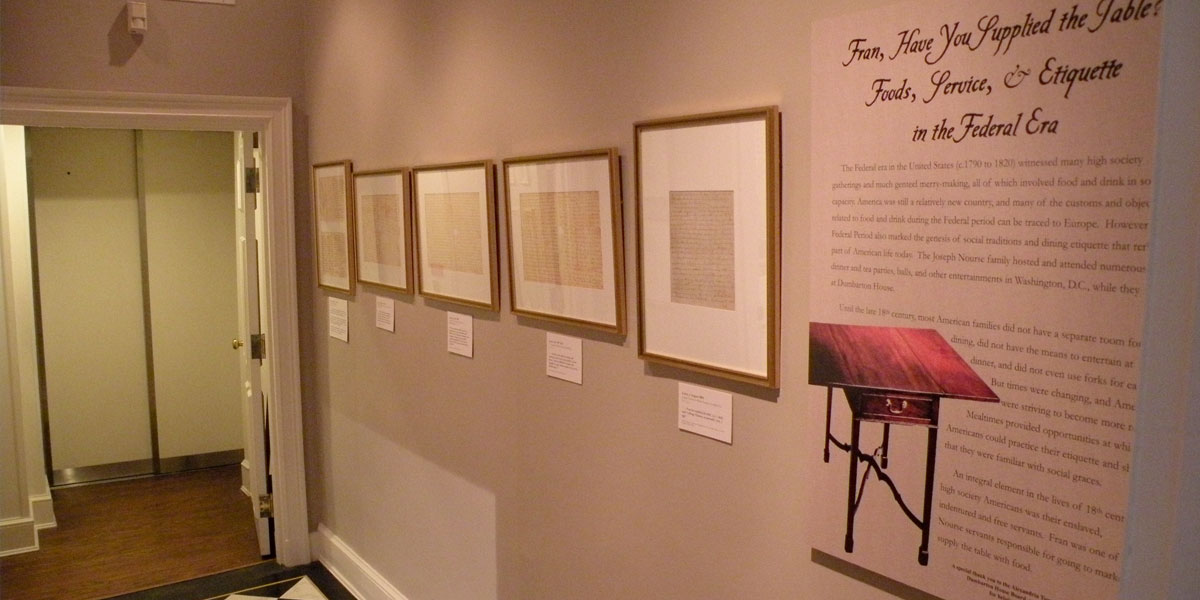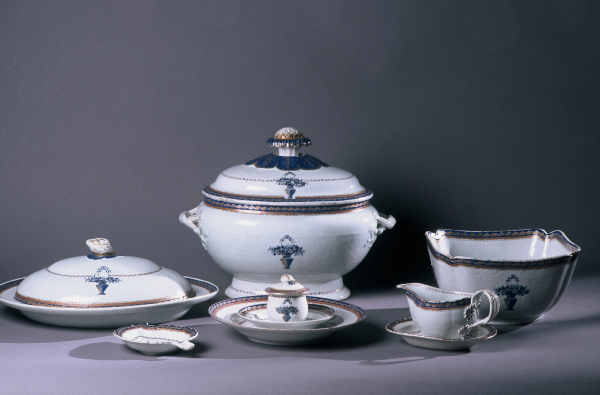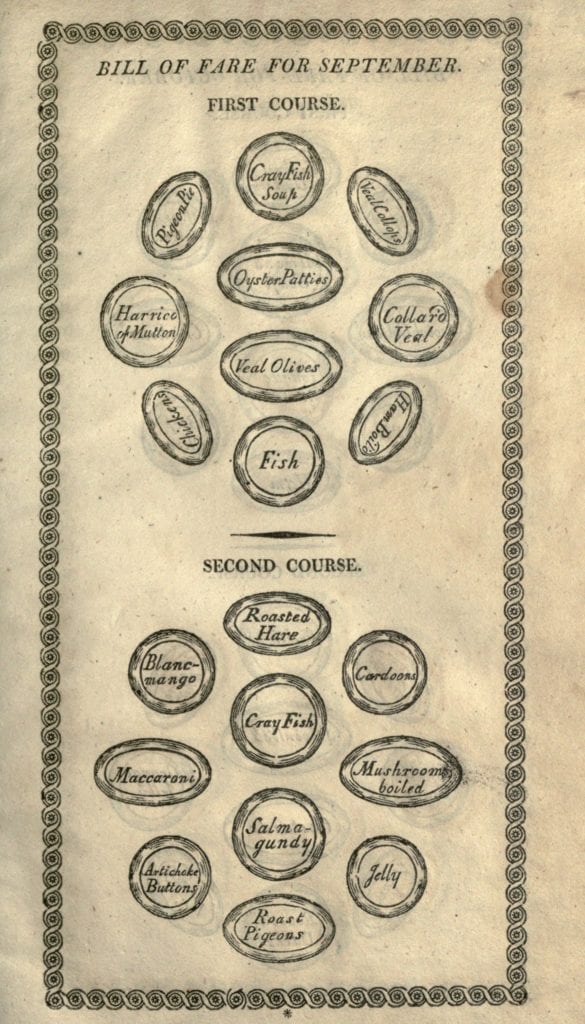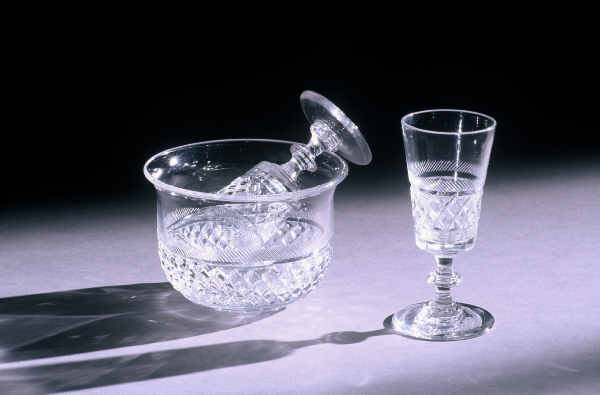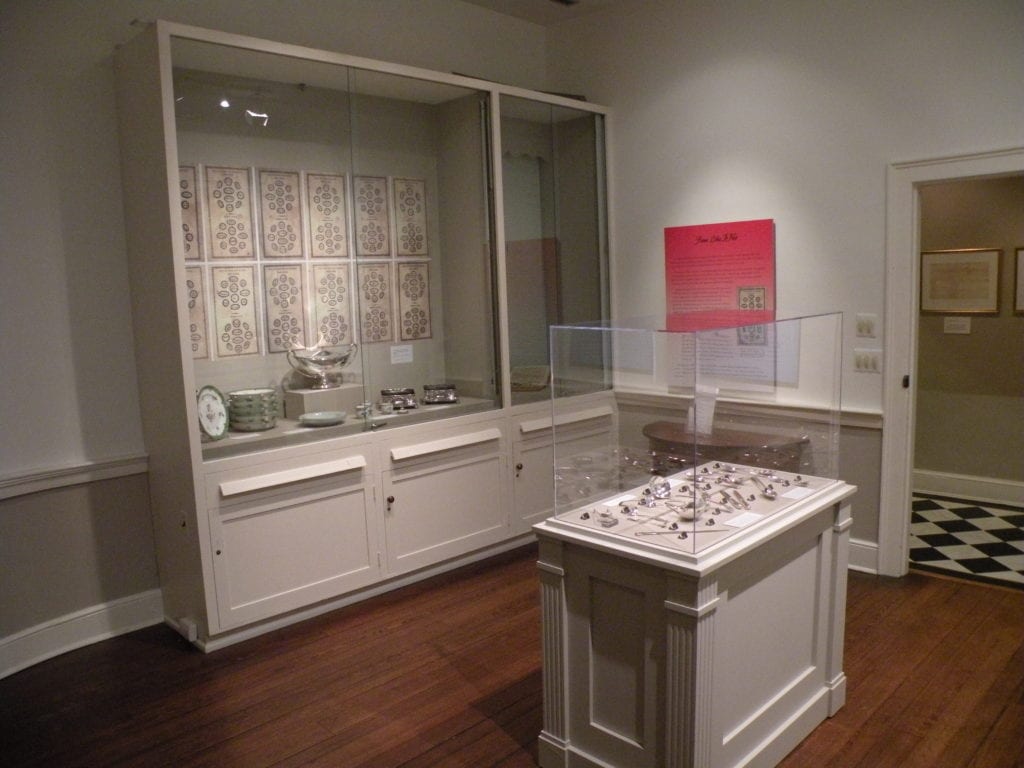The Federal era in the United States (c.1790 to 1820) witnessed many high society gatherings and much genteel merry-making, all of which involved food and drink in some capacity. America was still a relatively new country, and many of the customs and objects related to food and drink during the Federal period can be traced to Europe. However, the Federal period also marked the genesis of social traditions and dining etiquette that remains part of American life today. The Joseph Nourse family hosted and attended numerous dinner and tea parties, balls, and other entertainment in Washington, DC while they lived at Dumbarton House.
Until the late 18th century, most American families did not have a separate room for dining, id not have a means to entertain guests at a dinner, and did not even use for eating. But times were changing, and Americans were striving to become more refined. Mealtimes provided opportunities at which Americans could practice their etiquette and show that they were familiar with social graces.
An integral element in the lives of 18th century high society Americans was their enslaved, indentured and free servants. Fran was one of the Nourse servants responsible for going to markets to supply the table with food.
Dining Room
During the Federal Era, the dining room was the primary location for formal entertainment. Some dinners were exclusively for gentlemen. However, when women were present, they were no longer seated separately, but rather alternately with men around the table. One writer referred to this as the “new, promiscuous way of dining.”
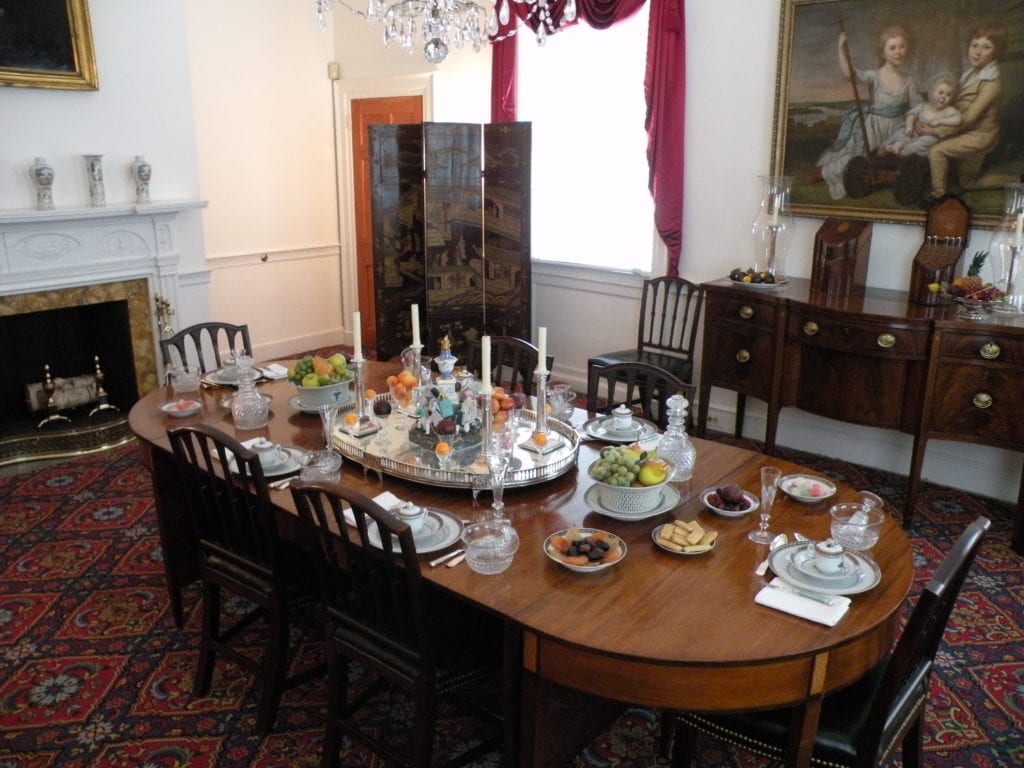
The large table is set for the second of three courses. The uppermost of the two table cloths has been removed, and the serving dishes, as well as the plates for each place setting, are laid in careful symmetry around the table. Service à la françoise, the style shown here, required that the foods comprising a single course be displayed before the diners so each guest could make an “informed choice.” In America, it would be another 40 or more years before service à la russe became popular, the style we follow today at formal dinners.
Breakfast Room
During the Federal Era, the “breakfast room” was an informal family room that was used for private occasions, including the partaking of breakfast.
Robert Roberts, a butler, in Roberts’ Guide for Butlers & other Household Staff (1827), provided these directions for setting out the breakfast table:
“…put around your plates, one for each person…you must always have salt on the table, as most families have eggs, or some kinds of meat on the table for breakfast.
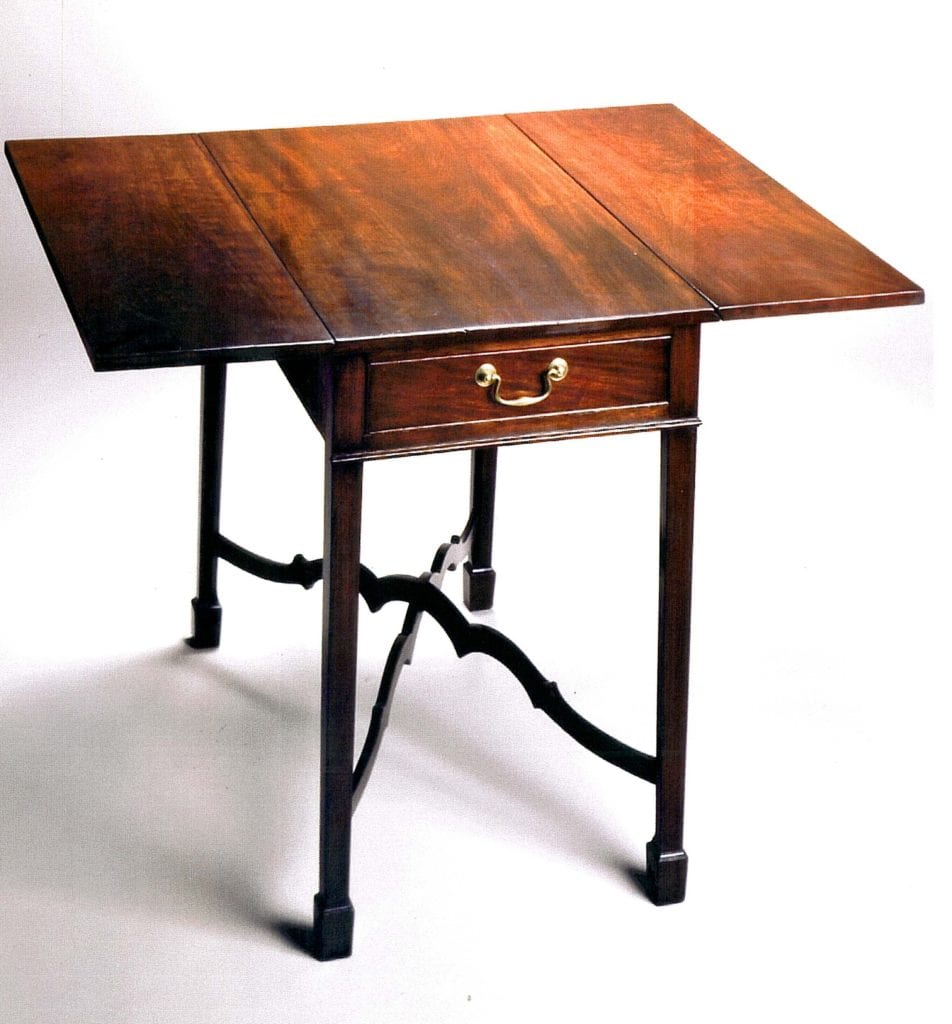
In summer, you must put your butter and cream to cool some time before you have set your table…When you have every thing properly arranged on your breakfast table, then put round the chairs, and if it is cold weather, see that your fires burn well,…then see that the water boils,…for your [tea] urn…Whatever you have to carry in for breakfast, such as toast, rolls, eggs, &c….never…hand any thing with the naked hand as it looks very ungenteel.”
Tea Room
Tea was served after a formal dinner, or could be offered to guests who stopped in unexpectedly. It might be offered at an evening of card playing or music, or just to accompany conversation with friends. Tea was drunk whether the day was hot or cold. (Iced tea appears not to have been popular until the middle of the nineteenth century.) Together with tea, a hostess would serve “cake, wafers, toast, bread and butter, &c.,” as a famous guide for house servants later describes. Fresh fruit in season, particularly strawberries, was also a popular accompaniment.
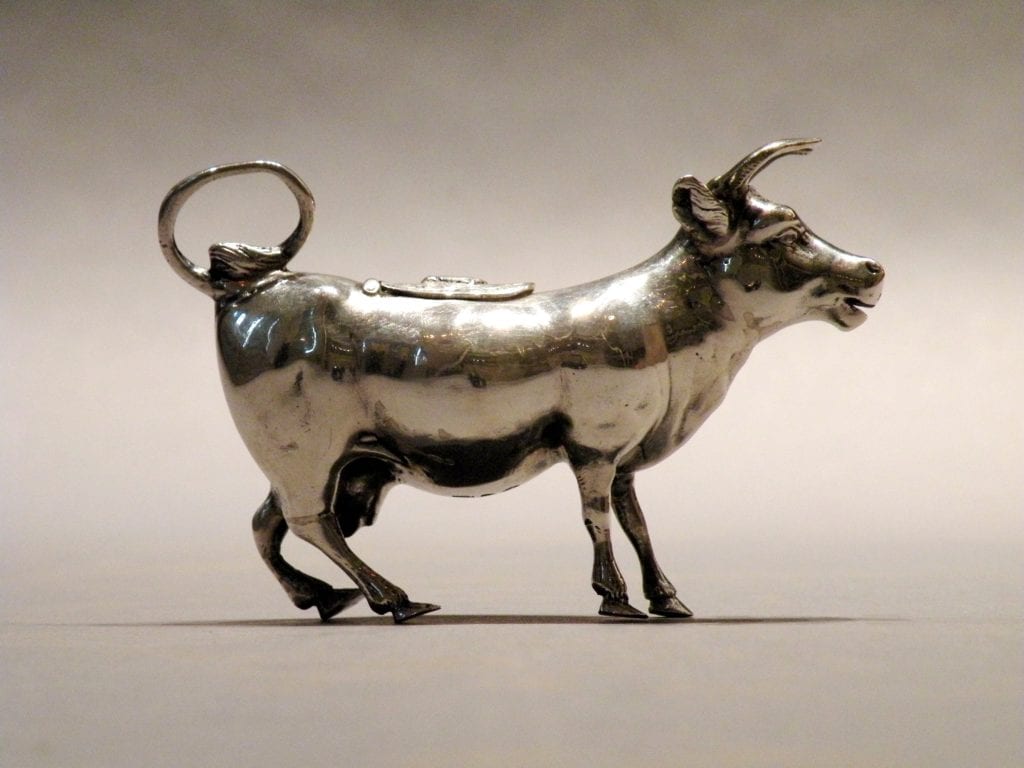
Because tea drinking was such a frequent form of entertainment, specialized “equipage” also emerged — the graceful hot water urn and urn stand, the porcelain teacups and saucers, the silver tea pot with matching sugar bowl, and cream pot. All these objects signified a gracious, socially up-to-date household.


